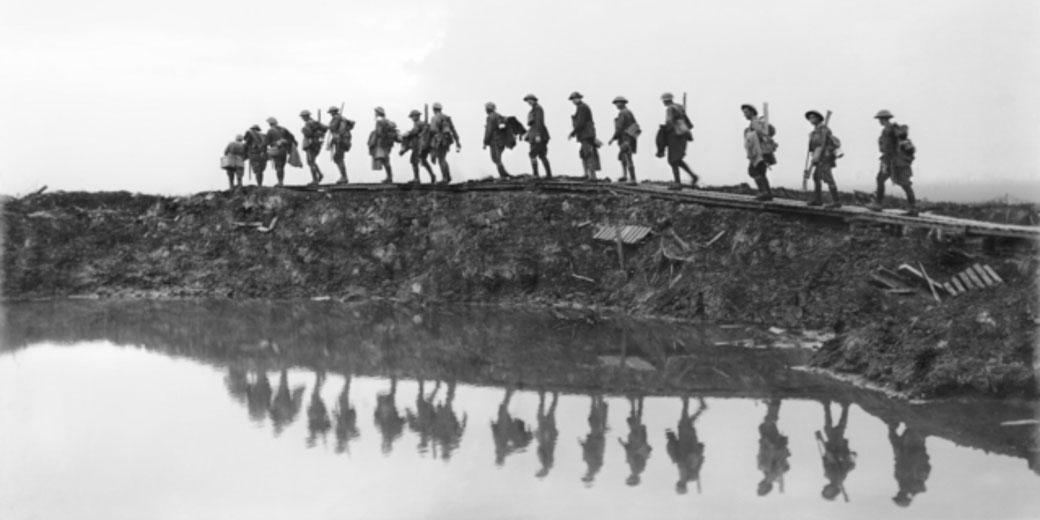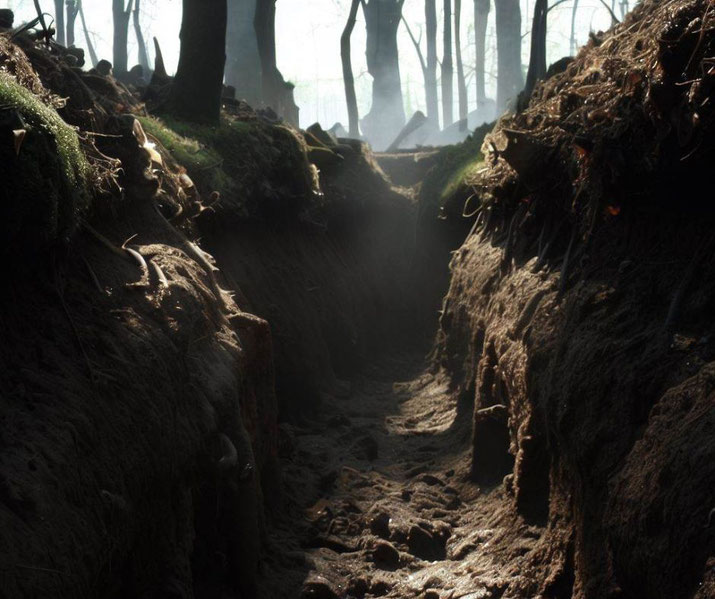What was the dramatic 'Race to the Sea' at the outbreak of WWI?

In the early autumn of 1914, as the first leaves began to fall, the world was witnessing a different kind of season - one of war.
The Great War, as it was known then, had just begun, and the Western Front was in its infancy. But both sides had sent their forces on the same strategic maneuver: the Race to the Sea.
This was not a race of speed, but of endurance and strategy: a desperate dash by both the Allies and the Central Powers to secure the crucial coastline of Belgium and Northern France.
But what exactly was the Race to the Sea?
And, most importantly, how did this race shape the next four years of warfare?
How the drama began
The Race to the Sea took place in the early stages of World War I, from mid-September to late October 1914.
The term "Race to the Sea" is somewhat of a misnomer, as it was not a literal race to the coastline, but rather a strategic attempt by both the Allies and the Central Powers to outflank each other in the region of northern France and Belgium.
This race had been triggered by the spectacular failure of the Schlieffen Plan, Germany's initial strategy for a quick, decisive victory over France.
The plan, named after its architect, German Field Marshal Alfred von Schlieffen, called for a rapid sweep through Belgium to encircle and crush the French armies.
However, the plan faltered at the Battle of the Marne in early September 1914, when the French and British forces managed to halt the German advance.
The race begins...
As the dust settled from the Battle of the Marne, both the Allies and the Central Powers were quick to realize that a new strategy was needed.
The war of rapid movement, as envisioned by the Schlieffen Plan, had given way to a more static form of warfare.
The front lines were solidifying, and both sides began to look northward, towards the unoccupied coastline of Belgium and Northern France.
The first side to secure the best defensive locations for the drawn-out trench warfare ahead would be in a much stronger position.
Thus, the Race to the Sea began.
The German forces, under the command of General Erich von Falkenhayn, sought to secure the key ports of Calais and Dunkirk.
They hoped to cut off the British Expeditionary Force (BEF) from its supply lines and to prevent any further landings of British troops.
Meanwhile, the French, under General Joseph Joffre, aimed to prevent the Germans from reaching the sea and to protect the crucial industrial regions of northern France.
Battle of Albert (September 25-29, 1914)
The Battle of Albert was the first significant clash in the Race to the Sea. The French Sixth Army, under the command of General Michel-Joseph Maunoury, launched an offensive against the German Second Army, led by General Karl von Bülow.
Despite initial gains, the French were unable to break through the German lines, and the battle ended in a stalemate.
The Battle of Albert saw the initial stages of the trench warfare that would characterize the Western Front for the rest of the war.
Battle of Arras (October 1-4, 1914)
The French Tenth Army, under General Louis de Maud'huy, then attempted to outflank the German Sixth Army.
The French were quick to capitalize on their early successes in this battle, but were ultimately unable to maintain their momentum.
As a result, the Germans managed to hold their ground and secure their defenses.
At its completion, the battle resulted in heavy casualties on both sides. It also saw the end of the French attempts to break through the German lines in Artois.
Battle of La Bassée (October 10-November 2, 1914)
The next major battle was at La Bassée. This was a much more protracted engagement.
This time, it was between the British Expeditionary Force and the German Sixth Army.
Originally, the British aimed to secure the town of La Bassée to protect their left flank and to disrupt German communications.
However, in the face fierce fighting, neither side was able to secure a decisive victory.
The battle ended in a stalemate.
Battle of Messines (October 12-November 2, 1914)
At around the same time, the Battle of Messines was taking place. It was a part of the larger Ypres campaign.
The British and French forces aimed to secure the Messines Ridge, a strategic high ground in the region.
Aside from some initial gains, the Allies were unable to hold the ridge, and it fell into German hands.
The battle was notable for the heavy use of artillery and the high number of casualties.
However, it would become a key tactical objective over multiple battles of the war.
First Battle of Ypres (October 19-November 22, 1914)
Finally, the broader fighting culminated in the First Battle of Ypres. Most historians consider this as the final and most significant battle in the Race to the Sea.
The German forces launched a major offensive aimed at breaking through the Allied lines and capturing the strategic town of Ypres.
The town of Ypres, which would be the site of several more battles throughout the war, became a symbol of the Allies' determination to resist the German advance.
How it changed the nature of warfare
The Race to the Sea was a crucial element in changing nature of warfare.
While the early stages of World War I had seen a war of movement, the race made it clear that a new form of warfare was emerging.
One of the most significant developments during this period was the widespread adoption of trench warfare.
As both sides attempted to outflank each other, they began to dig defensive positions to protect their flanks and rear areas.
These trenches provided cover from enemy fire and a secure base from which to launch attacks.
Over time, these individual trenches were connected to form continuous lines of defense.
This was the beginning of the static warfare that would characterize the Western Front for the rest of the war.

The Race to the Sea also saw the increasing importance of artillery and machine guns.
For its part, artillery was used to soften up enemy positions before an infantry attack and to disrupt enemy supply lines.
Machine guns, meanwhile, were used to defend against enemy attacks. The deadly combination of artillery and machine guns made it extremely difficult for either side to achieve a breakthrough, contributing to the stalemate on the Western Front.
In strategic terms, the Race to the Sea resulted in a stalemate. Neither the Allies nor the Central Powers were able to achieve their strategic objectives.
The Allies failed to prevent the Germans from reaching the sea, and the Germans failed to cut off the British Expeditionary Force from its supply lines.
What do you need help with?
Download ready-to-use digital learning resources
Copyright © History Skills 2014-2024.
Contact via email
With the exception of links to external sites, some historical sources and extracts from specific publications, all content on this website is copyrighted by History Skills. This content may not be copied, republished or redistributed without written permission from the website creator. Please use the Contact page to obtain relevant permission.





